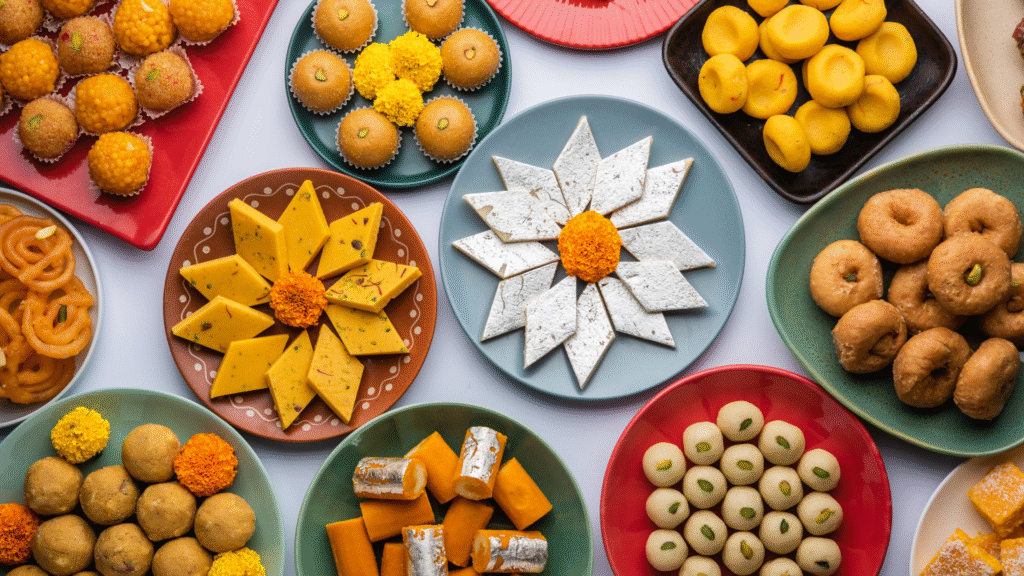
Why Does Sugar Matter?
Delving Into the Past
There was a time, in the early days of my career, when sugar was a luxury, carefully measured, respectfully used, and deeply savoured. I still remember the years when even a small bowl of kheer or halwa felt like a feast, and mithai was shared with reverence, not abundance. Today, sugar has become a constant companion. Sugar is present in every cup, every spoon, every bite, every moment of indulgence. I have lived through both these worlds: from scarcity to excess, and it’s worth pausing to ask: what have we gained, and what have we lost?
The Sweet Beginning
In India, sweetness has always been sacred. A touch of sugar marks every auspicious occasion; from the first day of school to weddings, and, of course, Diwali. We can all associate with Big B’s advertisement for Cadbury’s – “Kuchh meetha ho jaaye?” We start new ventures with mithai because sweetness signifies blessings, hope, and positivity. No celebration feels complete without it. Even the first cuppa coffee or tea is laced with sugar.
Come Diwali, mithai becomes both tradition and token; it’s an edible form of affection. We exchange boxes of sweets not just to please the palate, but as symbols of prosperity, sharing, and goodwill. The more beautiful the box, the more it seems to please the goddess of wealth herself, a gesture of gratitude and invitation for abundance. It’s also believed that the Goddess of wealth loves to indulge in rich mithai like kaju katlis, kesar pedhas, badam pista rolls, and other premium sweets. In fact this year a mithai sold for over a lakh rupees for a kilo!
‘The most expensive mithai recently made was ‘Swarn Prasadam’, a sweet from Jaipur priced at Rs 1.11 lakh per kilogram. It is made with 24-carat edible gold (Swarna Bhasma), premium ingredients like pine nuts, and is packaged in a special jewelry box.’
Yet, there’s no change in the ‘sweet’ part!
The Sweet Business
Today, the mithai industry is as grand as the festivals it celebrates. From luxury patisseries crafting designer laddoos to traditional halwais modernising age-old recipes, sugar has become big business. Consumption patterns have shifted, and so have our palates. The traditional khoya-based mithai now shares the spotlight with fusion desserts, artisanal chocolates, and syrup-laden confections in shimmering gold boxes.
But amid this spectacle of sweetness, I can’t help but wonder: what are we sacrificing for pleasure?
The Bitter Reality
India, once a land where sweets were seasonal and shared, now stands as the diabetic capital of the world. Sugar, which was once a treat, has quietly turned into a daily habit. And yet, many still believe that sugar doesn’t cause diabetes; a comforting myth that needs unravelling.
While sugar alone isn’t the sole culprit, our overconsumption, coupled with inactivity and stress certainly plays its part. Excessive sugar affects more than our blood glucose; it influences our mood, our energy, even our ability to think clearly, not to mention the gradual deterioration of vital organs of our body.
Some countries have already introduced a “sugar tax” and “obesity tax”. This is a bold move to discourage excessive consumption and to make people aware of what’s on their plate (and in their glass/cup). Perhaps it’s time we had more conversations like that here too, not out of fear, but out of awareness.
A Spoonful of Change
Fortunately, we have options. The world of natural sweeteners like jaggery, stevia, dates, honey, coconut sugar are full of flavour and nostalgia. But even these alternatives need moderation. As I often remind my younger chefs, “too much of even the good thing is never truly good.”
The solution lies not in elimination, but in balance. Celebrate sweetness, but do so consciously. Save the motichoor laddoo for Diwali, not for every evening.
A sugar detox doesn’t have to mean deprivation. It can mean rediscovering the sweetness of fruits, the comfort of naturally sweet foods, and the quiet satisfaction of restraint. It can mean retraining your palate to appreciate the real taste of ingredients, and not the overpowering veil of sugar.
The Future of Sweetness
As chefs, we are not only creators of flavour and experience, but also custodians of health. Our choices in the kitchen can influence the choices of those we serve. The future, I believe, lies in conscious indulgence, and in choosing recipes that respect both tradition and wellbeing.
I invite you, my fellow chefs, home cooks, and food lovers, to share your own ideas on how we can make our sweets healthier, our celebrations more mindful, and our palates more balanced.
Let’s work together to create a future where sweetness still defines our culture, not our health charts.
Because in the end, life should be sweet, just not sugar-coated.